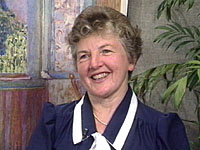
Fran Allen |
1990: IBM Fellow
2007: IBM Fellow Emerita
Fran Allen is one of the seminal names in computer science, known for her work on the Stretch computer and on compiler technology. She
combines technical brilliance with a glowing enthusiasm that sweeps everyone along in her wake. There are people in this world that you marvel
you've shared this world with. She's one of those. If there's anything that surpasses her mind, it's her heart. The Turing Award couldn't have
been given to a more deserving recipient.
IBM Fellow, 1989
President, IBM Academy of Technology, 1995
Computer History Museum Fellows Award, 2000
ACM Augusta Ada Lovelace Award, 2002
A.M. Turing Award, 2007
Wikipedia Biography
WITI Hall of Fame
WITI Biography
WITI Biography
ACM Interview
|
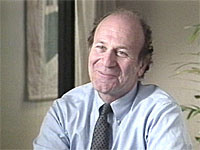
Joel Birnbaum
Watch Edited Full Interview
|
1990: Vice-President R&D, Hewlett-Packard Company
2007: Senior Technical Advisor, Hewlett-Packard Company
Joel Birnbaum was with IBM's T.J. Watson Research Center, serving as Director of Computer Sciences from 1965 to 1980.
Wikipedia
ACM Fellows Award
IEEE Ernst Weber Engineering Leadership Recognition, 2000
Biography
Computer History Museum Biography
The History of the Future of the City lecture
Pervasive Information Systems
|
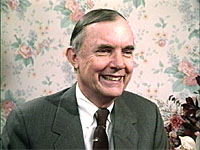
Lewis M. Branscomb
Family Foundation
Watch Edited Full Interview
|
1990: Professor, Harvard University
2007: Director and Profeesor Emeritus, Harvard's Belfer Center
Like John Cocke, a graduate of Duke University, Lewis Branscomb was IBM Chief Scientist from 1972 to 1985.
Vannevar Bush Award of the National Science Board
Arthur Bueche Award of the National Academy of Engineering
Gold Medal of the U.S. Department of Commerce
Okawa Prize in Communications and Informatics
Centennial Medal of the Harvard University Faculty of Arts and Sciences, 2002
Chairman, National Science Board, 1980-1984
Wikipedia
Branscomb Organization Biography
American Institute of Physics Biography
Belfer Center Biography
Publications
|
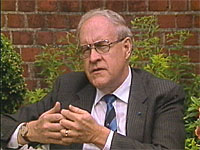
Fred Brooks
Watch Edited Full Interview
|
1990: University of North Carolina at Chapel Hill
2007: Kenan Professor, University of North Carolina at Chapel Hill
Yet another Duke University graduate, Fred Brooks managed the Systems 360 development, writing about the experience in
the famous book, "The Mytical Man-Month".
A.M. Turing Award, 1999
National Medal of Technology, 1985
Almost too many awards to imagine
Builders Biography
Wikipedia Biography
U of NC Biography
Everything Biography
FORTUNE Interview
Lecture Videos from CMU
|

John Cocke
Watch Edited Full Interview
Part 1
|
1990: IBM Fellow
1925-2002
A much loved and respected computer scientist, about whom the word "gentleman" was the most frequently used adjective. He lived life
with joy. It rebounds to IBM's great credit that they were able to integrate this genius into what was considered to be a Brooks Brothers,
buttoned down world, and give John the room and support that let his contributions magnify as he seeded his ideas through several
generations of scientists. The hole he leaves in this world is not easily filled, and he is certainly never forgotten.
Because I served as chair of the ACM Special Interest Group on Programming Languages, and ran conferences and edited language newsletters,
John would occasionally stop me in the halls of Yorktown and just talk. When he had finished, he'd encourage me to follow up on the
topic of his monologue, and just move on to the next person, or the next office, along his meandering path. I was usually left blinking,
as his expertise was so far beyond my own as to be almost incomprehensible. But there was such kindness in his manner, and such love of whatever
his current topic was, that my recognition of the difference in our depths came only from myself, and never from John. He truly was
the ultimate gentleman.
IBM Fellow, 1972
ACM/IEEE Eckert-Mauchly Award, 1985
A.M. Turing Award, 1987
National Medal of Technology, 1991
National Medal of Science, 1994
IEEE John von Neumann Medal, 1994
Wikipedia Biography
IBM Biography
Computer History Museum Biography
History of Computing Biography
Harwood Kolsky Remembers John Cocke
Interview
Publications
IBM Obituary
Obituary
|
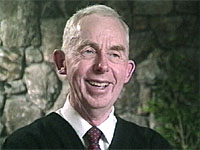
Bradford Dunham |
1990: IBM Research Staff Member
died about 1990
Another IBMer with a connection to Duke, Bradford Dunham was an instructor at Duke from 1950 to 1953,
before joining IBM in 1955. He was a logician, and did significant work on chip design.
Harvard University's Sheldon Travelling Fellowship, 1948
Harvard PhD Dissertation
1959 IBM Journal Biography
Multipurpose Logical Apparatus Patent
Logic-circuit Layout for Large-scale Integrated Circuits Patent
Computer Science and Its
Applications First Distinguished Lecture Series at Harvard's Center for Research in Computing Technology
|
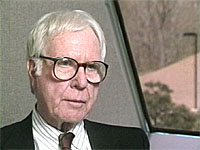
Red Dunwell
Watch Edited Full Interview
|
1990: Retired IBM Fellow
(1913 - 1994)
"Red" Dunwell was an early IBMer, joining in 1934 and retiring in 1976. He worked on early marked card
machines, and built the switching device Eckhart used in his experiments. During WWII, Red joined the
U.S. Armys Security Agency, leaving as a Lieutenant Colonel and being awarded the Legion of Merit.
After working on numerous other early IBM machines, Dunwell was made manager of the Stretch project in 1958.
In 1992, IBM and Dunwell made public the fact that he had helped to develop a top-secret IBM computer that
decoded intercepted enemy radio messages during World War II.
IBMs Outstanding Invention Award
IBM Fellow, 1966
IEEE Computer Pioneer Award, 1992
IBM Biography
ACM Obituary
APL as the Doundation for a Universal Computer Language
|
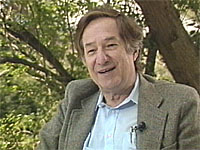
Ed Fredkin
1990: Professor of Physics, Boston University
2007: Distinguished Career Professor, CMU
Ed Fredkin is someone with the mental breadth of John Cocke, so it seems inevitable that they would have enjoyed one another.
Fredkin's field was physics, but he became involved with computers in 1956 when he was sent by the Air Force, where he had trained as a jet pilot,
to the MIT Lincoln Laboratory. Like many other BBNers, Fredkin moved from Lincoln Labs to BBN, then moved to MIT as a full professor.
Dickson Prize
Wikipedia Biography
Zoom Info Biography
Five big questions with pretty simple answers
Fifty Years of Hacks
The Peripatetic Philosopher
Internet for Things that Think - Audio
If the Universe Is a Program
|
|
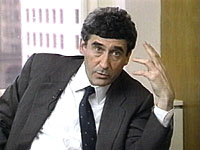
Ralph Gomory
Watch Edited Full Interview
|
1990: President, Sloan Foundation
2007: President, Sloan Foundation
A mathematician by training, Ralph Gomory was head of the IBM Research Division from 1970, becoming an IBM Senior Vice-President.
Lanchester Prize of the Operations Research Society, 1964
IBM Fellow, 1966
John von Neumann Theory Prize, 1984
I.R.I Medal, 1985
White House Science Council, 1986
National Medal of Science, 1988
Wikipedia
Builders Biography
|
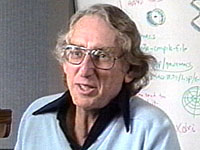
Ian Gunn
Watch Edited Full Interview
|
1990: IBM Fellow
(1928-2008)
Gunn's name will always be associated with his discovery in 1963 of the Gunn Effect.
APL
IBM Fellow
The Legends Award
IEEE Morris N. Liebmann Memorial Award, 1969
John Scott Award, 1971
Elected to National Academy of Engineering, 1978
Wikipedia Biography - John Battiscombe Gunn
Wikipedia Gunn Diode
Britannica Gun Diode
Amplifier or Generator of Optical-mode Waves in
Solids Patent
Blame the radar gun on Ian
Use of virus functions to provide a virtual APL interpreter under user control
Gunn, J.B. Microwave oscillations of current in III/V semiconductors. Solid State Commun., 1963
1, 88.
Gunn, J.B. Instabilities of current and of potential distribution in GaAs and InP. Proc. Plasma
Effects in Solids, Dunod, Paris, 1965, 199.
|
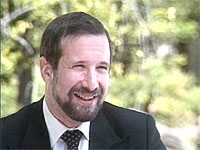
Andrew Heller |
1990: Consulting Partner, Klein, Perkin, Caulfield and Byers
2007: Founder, Heller Associates
With IBM for twenty-three years, Heller was corporate director of advanced technology systems and
general manager of the business unit responsible for the RISC development. Following his career at
IBM, Heller became involved with a Silicon Valley venture capital company, Klein, Perkin, Caulfield and
Byers, then went on to spectacular success with numerous startup companies.
Youngest IBM Fellow
Biography
News Relief
Heller Records Biography
Christmas Music
|

Harwood Kolsky
Watch Edited Full Interview
|
1990: Professor, Computer Science, University of California at Santa Cruz
2007: Emeritus Professor, Computer Science, UCSC
(1921-2015)
Harwood Kolsky was a physicist working at Los Alamos, when he hired into IBM as a member of the
product planning group for the Stretch computer. His IBM career has spanned the continent from
Poughkeepsie to San Jose and Palo Alto, and his interests are just as wide reaching. Recognizing
the historical value of the work on which he was engaged, Kolsky was able to collect and donate a
large document collection to the Computer History Museum. While no longer with the University of
California, he's still a researcher, but working now with local California history.
IBM Fellow, 1969
Mark Smotherman Biography
Harwood Kolsky Remembers John Cocke
Stretch Document Treasure Trove Donated by Prof. Kolsky
Historical and Genealogical Work
|
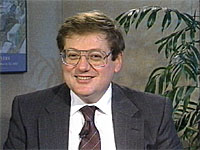
Abe Peled |
1990: Vice-President, Systems, IBM Research Division
2007: Director, President and Chief Executive Officer of NDS Group
Educated at Technion-Israel Institute of Technology and Princeton, joined IBM after interviewing
with John Cocke and, with Fran Allen, is primarily responsible for the creation of the video and multimedia
kiosk, John Cocke: A Retrospective by Friends. Peled was Cocke's manager at the time Cocke won the Turing Award,
and ended up having to write and give the Turing Lecture. After leaving IBM, Peled became President of the NDS
Group, and devotes his energies to multimedia technical issues.
In 1988, I stopped Abe after he gave a talk on 'Pursuit of Excellence" and asked him if he could find
something for me to do, outside the area of computer languages, that would engage my wholehearted energies.
Abe did. He gave me an international multimedia magazine to bring the IBM Research labs together, and I worked
for him for several years. It's truly hard to contain the adjectives that I would use to describe this
incredible person. Risk taker, visionary, the epitome of what a manager and executive SHOULD be. Suffice it to
say that I really would crawl over broken glass for this man.
Wikipedia
CTAM Biography
The future of TV according to Abe Peled
Interview
Murdoch's Mr Moneybags
NDS: An Excellent Long-Term Investment
NDS and IBM kick-off spate of set-top deals
Wikipedia NDS
Abe Peled's Secret Start-Up at I.B.M., 1991
|

Jack Schwartz
Watch Edited Full Interview
|
1990: Professor, New York University
2007: Retired, NYU Courant Institute of Mathematical Sciences
Emeritus Faculty, NYU Media Research Lab
(1930-2009)
Jack Schwartz's career would put a perpetual motion machine to shame. His interests are spread across
linear operators, von Neumann algebras, quantum field theory, time-sharing, parallel computing,
programming languages, optimization, computational logic, robotics, and multimedia.
He's been director of DARPA, actively collaborating with IBM, and professor at NYU since 1957.
He's published 18 books and over 100 articles.
NYU Biography - Jacob T. Schwartz
Wikipedia Biography
Bibliography
Parallel Computing Pioneers Bibliography
Symposium to Honor Schwartz's Career
SETL
Wikipedia SETL/a>
Motions in Cells: Some Reflections on Biology and Robotics
|
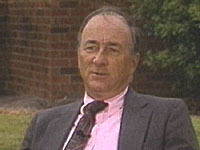
Ed Sussenguth
Watch Edited Full Interview
|
1990: IBM
2007: Retired IBM Fellow
(1932-2015)
With a background of Harvard and MIT in electrical engineering and mathematics, Ed Sussenguth was another
Navy veteran to come to IBM. His fields of interest included high performance computers, formal language
descriptions, networking and high speed communications.
IBM Fellow, 1981
Data Communications Interface Award, 1988
President, IBM Academy of Technology, 1989
IEEE Simon Ramo Medal, 1989
Wikipedia
Mark Smotherman Biography
Publications
Use of tree structures for processing files
Improved Program Branching Patent
Instruction Execution Patent for ACS
A Formal Description of SYSTEM/360
|
|
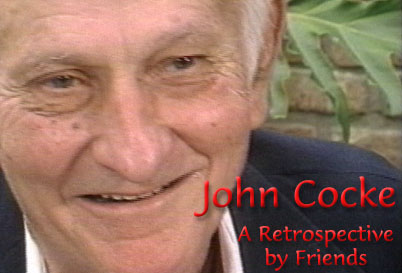




 Copyright © 2007, Mary S. Van Deusen
Copyright © 2007, Mary S. Van Deusen